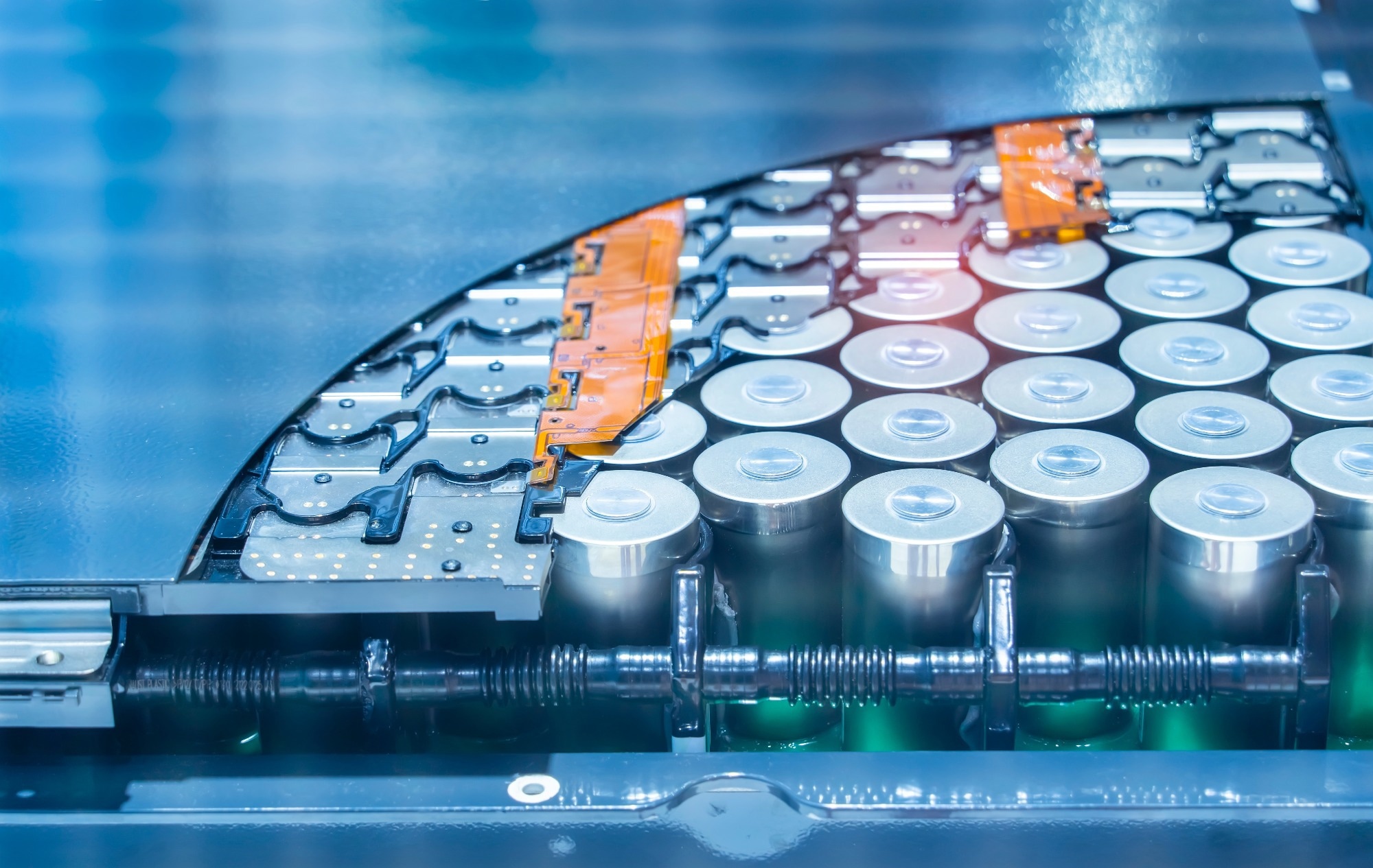A recent article in Nature Communications presented a cost-effective and straightforward method for rejuvenating positive electrodes in Li-ion batteries. The study utilized magneto-electrochemical synergistic activation (MEA) to transform degraded Ni-rich positive electrodes into high-quality functional materials.

Image Credit: asharkyu/Shutterstock.com
Background
Layered lithium nickel-cobalt-manganese oxides (LiNixCoyMn1-x-yO2 (NCM)) are increasingly considered for use as cathodes in power batteries, particularly as their nickel (Ni) content increases (x ≥ 0.8) to boost specific energy. However, higher Ni content introduces challenges, notably Ni/Li antisite disorder in the material's bulk structure. This disorder exacerbates phase transition degradation during electrochemical reactions.
Efforts to optimize synthesis conditions and produce high-quality crystals have shown progress, but the intrinsic presence of Ni/Li antisite disorder in Ni-rich NCM, caused by the abundance of trivalent Ni ions, remains an issue.
This study focused on understanding the role of electron spin states in influencing Ni/Li antisite disorder to address cathode degradation. Specifically, it investigated the degradation mechanisms in LiNi0.8Co0.1Mn0.1O2 (NCM811) cathodes during electrochemical processes,
Methods
Commercial NCM811 and graphite were utilized as positive and negative electrode materials to investigate the influence of the activation process of various magnetic intensities on electrochemical performance, respectively. These were employed in 2032-type coin cells assembled for electrochemical studies using Celgard-2025 as a separator and LiPF6 as an electrolyte.
The assembled battery was equilibrated at room temperature for 12 hours without a magnetic field. Subsequently, the MEA experiment was performed on the coin and pouch cells between 3.0 and 4.3 Volts at a low current density of 0.1 C and with the support of electromagnets. The galvanostatic current charging and discharging behavior of the specimens was recorded.
X-ray diffraction was used to investigate the crystal structure of the NCM811 cathode at different charging states. Microstructures and morphology of the samples were characterized using a field emission scanning electron microscope and transmission electron microscope (TEM).
The chemical composition of the cathode-electrolyte interface (CEI) was determined via X-ray photoelectron spectroscopy (XPS). Meanwhile, the materials’ magnetism was studied using a superconducting quantum interference design magnetometer.
Spin-polarized calculations were performed using the Vienna ab initio simulation package with the Perdew-Burke-Ernzerhof (PBE) for exchange-correlation functional and the projector augmented-wave pseudopotential for the core electrons.
Alternatively, density functional theory (DFT) was used to examine the configuration and binding energy between NCM811 and electrolyte components in the PBE of generalized gradient approximation.
Results and Discussion
The MEA process rejuvenated NCM811 cathodes by applying a magnetic field generated by parallel electromagnets during Li-ion battery electrochemical reactions. The proportion of high-spin Ni3+ in the discharge state decreased significantly with increasing magnetic field strength: 87.29 % at 0 T, 67.84 % at 0.08 T, 43.49 % at 0.16 T, and 19.85 % at 0.32 T.
In the absence of a magnetic field, the partial transformation of Ni3 into a high-spin state enhanced the super-exchange interaction of Ni–O–TM, exacerbating Ni/Li antisite disorder. Increasing the magnetic field strength during MEA increased the fraction of low-spin state Ni3+, effectively modulating the spin state of Ni3+ in NCM811.
Electrochemical measurements confirmed that the MEA process mitigated the super-exchange interaction, reducing the degree of Ni/Li antisite disorder. At 0.32 T, the Ni/Li antisite disorder ratio in the charged state was reduced to 1.80 %, and in the discharged state to 1.85 %, demonstrating the efficacy of MEA in improving the structural stability of NCM811 cathodes.
The MEA process significantly improved the structural and electrochemical properties of the NCM811 cathode. The interlayer spacing expanded, indicating a more ordered rearrangement of Ni/Li ions and a well-ordered layered structure. This ordering enhanced lithium-ion diffusion, as evidenced by a higher average Li⁺ diffusion coefficient in the 0.32 T MEA-treated battery compared to the untreated (0 T) sample.
The 0.32 T MEA graphite||NCM811 battery demonstrated superior high-rate performance, attributed to stable ionic channels formed by the orderly arrangement of the layered oxide structure. Scanning Electron Microscopy (SEM) images showed that after 300 cycles, the 0.32 T MEA-treated sample maintained structural integrity, with no visible cracks and an intact layered structure.
In contrast, the 0 T-treated sample exhibited several surface cracks caused by tensile and extrusion stress accumulation and uneven particle distribution, which degraded the electrode’s mechanical properties. These findings highlight the role of MEA in enhancing the structural and functional stability of NCM811 cathodes.
Conclusion
The study investigated a noninvasive rejuvenation strategy for Ni-rich NCM batteries using MEA to improve electrochemical performance. By controlling the spin state and enhancing the structural arrangement, the MEA process facilitated the formation of a compact and stable CEI, which is essential for long-term battery stability.
The MEA technique was proposed as a green, cost-effective, and efficient method for initial electrochemical activation and rejuvenation of NCM-based batteries. The findings suggest the MEA process has potential for broad industrial applications, offering an innovative approach to enhancing energy storage technologies.
Journal Reference
Gong, H. et al. (2024). Noninvasive rejuvenation strategy of nickel-rich layered positive electrode for Li-ion battery through magneto-electrochemical synergistic activation. Nature Communications. DOI: 10.1038/s41467-024-54641-z, https://www.nature.com/articles/s41467-024-54641-z
Disclaimer: The views expressed here are those of the author expressed in their private capacity and do not necessarily represent the views of AZoM.com Limited T/A AZoNetwork the owner and operator of this website. This disclaimer forms part of the Terms and conditions of use of this website.